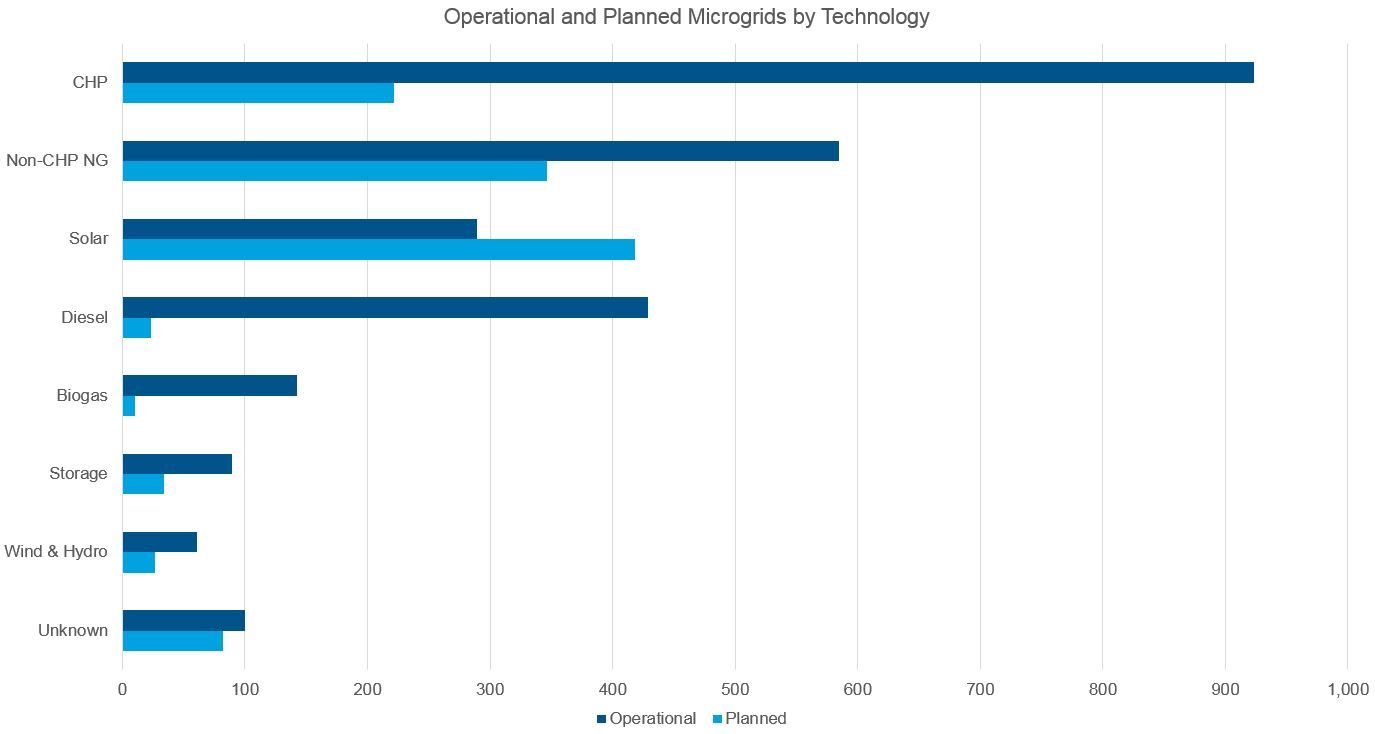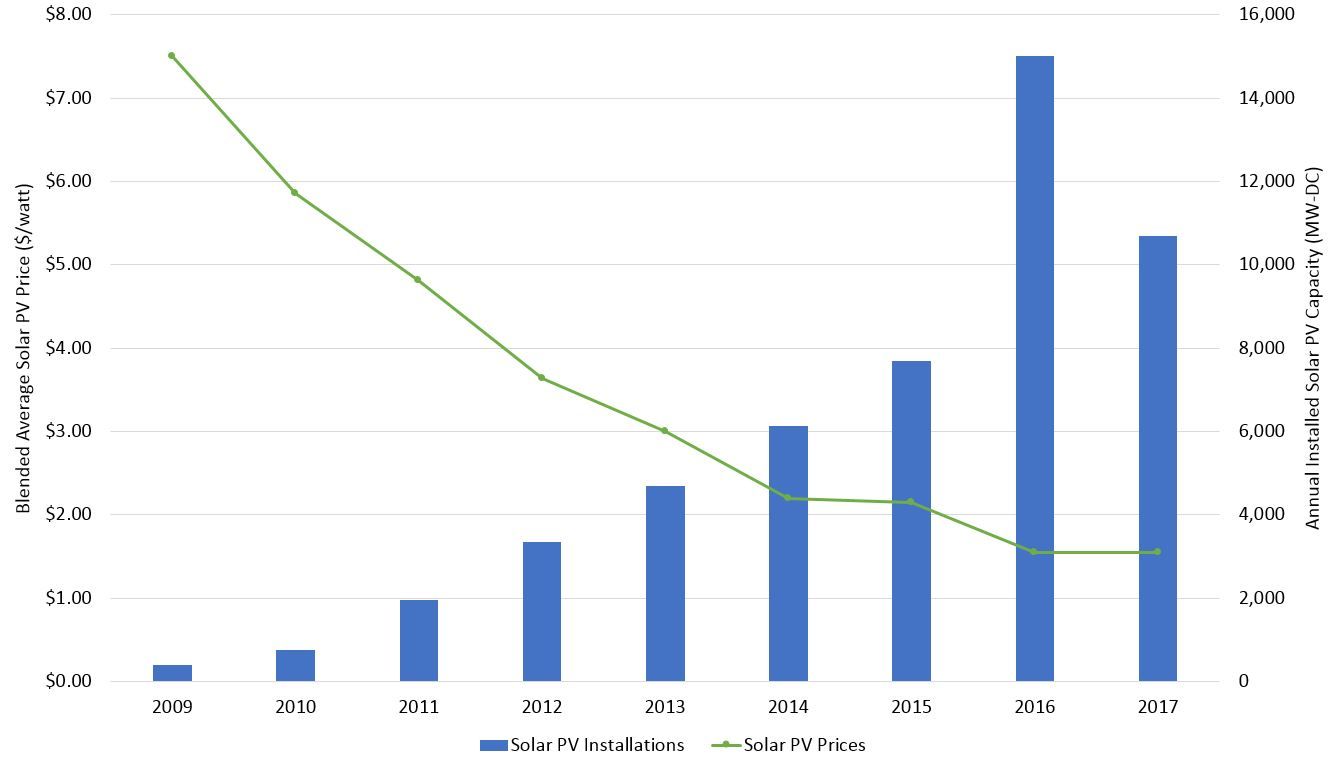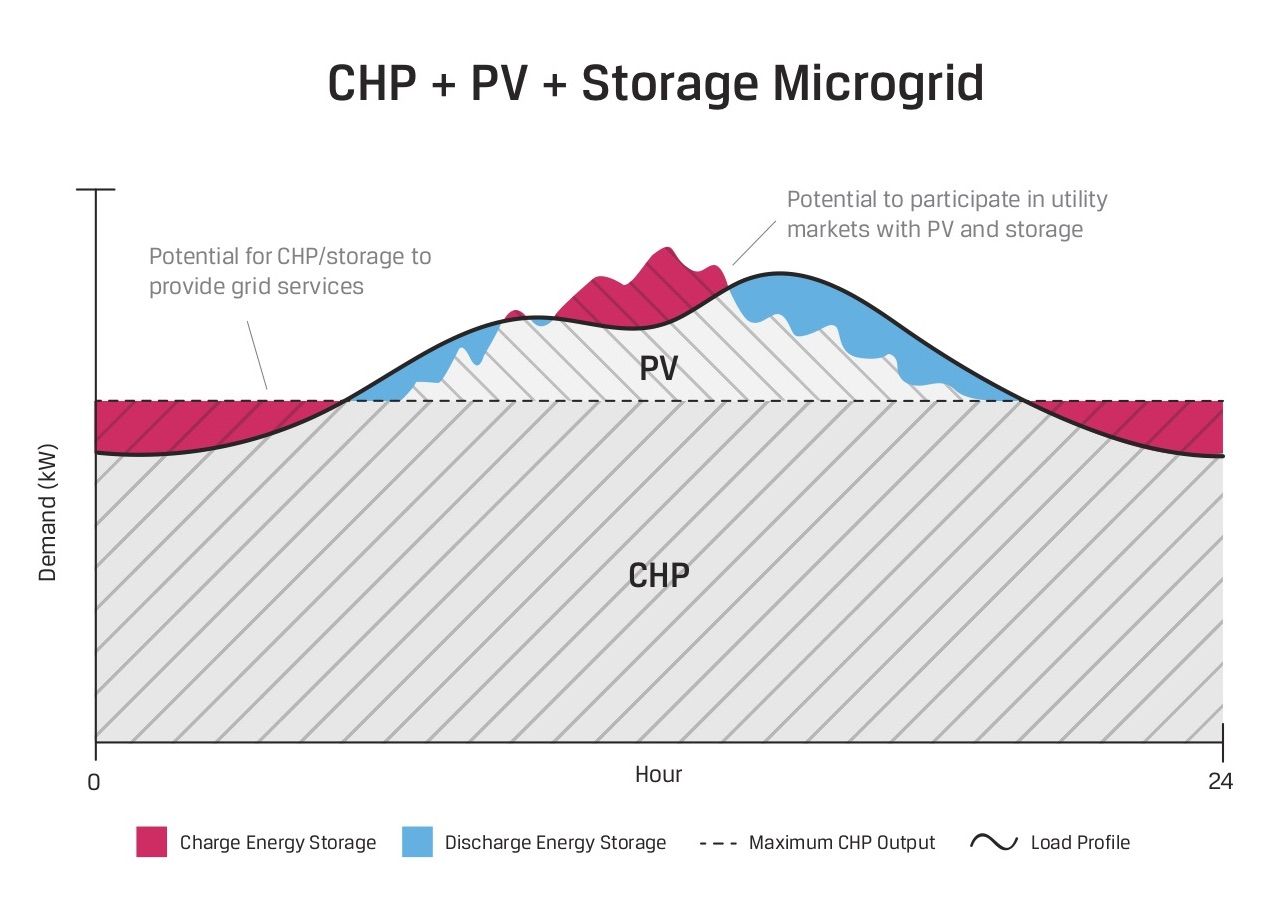
The multi-technology future of microgrids
In our first microgrid blog, ICF used our new database to identify four trends that are expected to drive the future of microgrid development. The biggest takeaway from the blog post, as highlighted in articles from Microgrid Knowledge and Clean Technica, was the large amount of planned solar PV capacity in microgrids. This was especially striking when compared to planned installations for combined heat and power (CHP), the traditionally dominant microgrid technology. As technologies advance and the market matures, microgrids will increasingly utilize a mix of distributed energy resources (DERs), including PV and energy storage, optimized for the needs of end-users and electric utilities.
CHP provides an efficient and resilient anchor for microgrids, but planned capacity for CHP in microgrids is falling behind solar, and even non-CHP natural gas generators. As can be seen in the chart below, CHP accounts for 3 times the capacity of solar PV in operational microgrids, while it only accounts for half of PV’s planned capacity. Non-CHP natural gas generators—those that do not incorporate heat recovery—have also taken the lead over CHP in planned microgrids. In this blog we explore the factors driving these trends, and what they could mean for the future of microgrids.
Microgrids by Technology

CHP and solar PV in planned microgrids
The category of operational microgrids includes campus CHP systems that date back to the 1980s. According to ICF’s Microgrid Database, more than half of all microgrids installed before 2010 included CHP, and most of these did not incorporate other technologies. Over a span of thirty years, these installations contributed to CHP having the most installed capacity compared to other technologies in operational microgrids. In contrast, planned microgrids only include those coming online within the next 3-4 years, and less than 20% of these microgrids will incorporate CHP.
Not all buildings and campuses have the necessary thermal loads for CHP, and many microgrids are using power-only natural gas generators to meet their needs for resilient baseload power. CHP systems require a consistent thermal load in the form of steam, hot water, or chilled water. Compared to a power-only gas generator, it takes more engineering, equipment, and time to install a CHP system with heat recovery, especially when distributing to multiple buildings. However, if there are thermal loads to be served, the efficiency gains from CHP tend to produce a more economical long-term investment.
Across the power industry, new CHP installations have remained relatively steady, while solar PV installations have been accelerating. Since 2010, new CHP installation capacity has averaged 770 MW annually, with 181 installations per year. However, solar PV installations have risen dramatically during this time, growing from less than 1 GW of new capacity in 2010 to over 10 GW in 2016 and 2017, with more than 1 million total installations. The rise of solar has coincided with a sharp drop in the average price of PV installations, as shown in the figure below.
Annual Solar PV Installations and Blended Average PV Prices

Source: Wood Mackenzie and Solar Energy Industries Association, 2018
With the availability of low-cost PV and the recent growth of the solar and microgrid markets, it is not surprising that the capacity for solar PV is so high in planned microgrids. However, resilience is the most common driver for microgrids, and PV alone cannot provide the level of resilience that many facilities require during extended power outages. Other distributed energy resources (DERs) like CHP and energy storage can complement PV output for resilient multi-technology microgrids that cover all critical site loads while providing increased value to utilities.
Fitting the pieces together for future microgrids
Compared to current microgrids—many of which consist of a single CHP system or gas generator—we expect multiple DER technologies to work together more frequently in future microgrids, incorporating PV, storage, and other technologies into new roles and use cases. Each technology has particular benefits that produce stacked values when strategically combined to respond to the needs of end-users and utilities. CHP and gas generators can be used for resilient baseload power while renewables and storage can be used to reduce emissions, meet peak site loads, and avoid high demand or time-of-use charges. Additionally, all of these generation sources can be used to participate in utility markets for capacity, demand response, and ancillary services.
Utilities can benefit from multi-technology microgrids with improved grid reliability, power quality, and renewables integration. When multiple technologies are configured in a microgrid network, an advanced controller can automatically make dispatch decisions based on site loads, system availability, market prices, and utility requirements. There are an infinite number of use cases when considering facility needs, local energy markets, available microgrid technologies, and potential network configurations.
In the example 24-hour load profile shown below, CHP, PV, and storage all work together to fully serve on-site loads, with the potential to provide grid services and participate in utility markets.

For a given site, the optimal configuration of microgrid components will vary depending on load profiles, existing resources, available space, and local energy markets.
Utilities getting into the microgrids mix
Microgrids can help utilities alleviate congestion, provide grid services, and balance renewable output. Many utilities, such as Duke Energy, are starting to incorporate CHP and other DERs into their resource planning as a solution for resilient and reliable power at critical facilities. Utilities like National Grid, United Illuminating, and Tennessee Valley Authority have partnered with the DOE’s Better Buildings CHP for Resiliency Accelerator to encourage the use of CHP and other DER technologies for resilience in critical infrastructure. With NYSERDA’s NY Prize microgrid incentive, utilities are working with communities and project developers to build 11 community microgrids, all of which are incorporating CHP in multi-technology microgrids. Additionally, many utilities are starting to explore the potential for utility-owned, rate-based CHP systems and microgrids.
As the microgrid market matures and the cost of PV and storage continue to fall, microgrids with multiple technologies that provide resilience and flexible operation will flourish. Electric utilities are likely to find value from many of these microgrid installations. Many utilities will install their own microgrids as they seek non-wires alternative solutions and move towards decentralized networks with DER management systems that can optimize available resources.